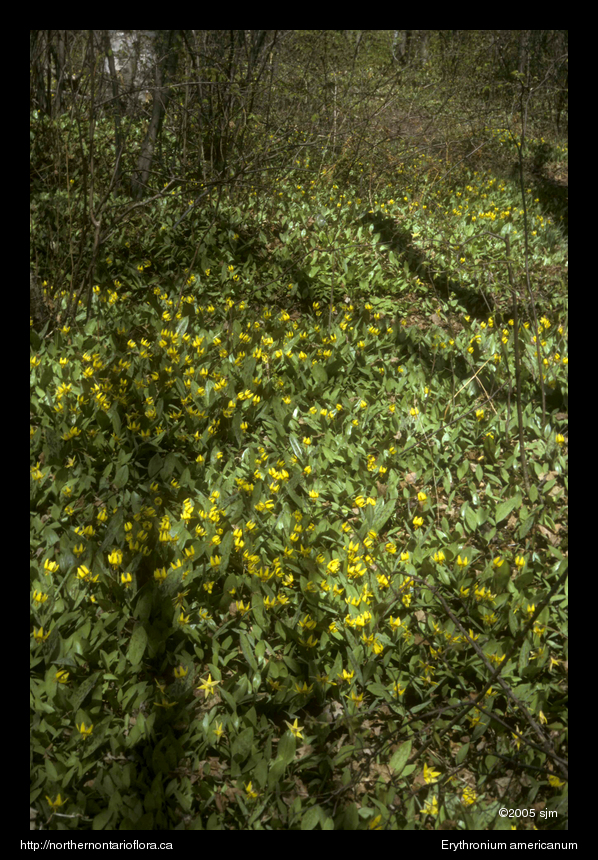
|
Northern Ontario Plant Database 
Plant DescriptionErythronium americanum Ker Gawl.En: yellow trout lily, yellow dogtooth violet, dogtooth violet, yellow adder's tongue
Liliaceae (Lily Family) General: A perennial herbaceous spring ephemeral, to 20 cm tall, growing from a deep, ovoid bulb that can send up several single-leaved sterile offshoots along with the fertile plant. Nectar is produced at the base of the tepals, typical of the family Liliaceae. The common name trout lily comes from the mottled leaves, which resemble the markings of the brook trout or lake trout. Leaves: A pair of basal leaves, smooth, sheathing at the base, mottled with purple to brown, the spots fading with maturity. Leaf blades elliptic to lanceolate, to 20 cm long and 5 cm wide, margins entire. Flowers: Bisexual; the single terminal flower nodding. Tepals 6, yellow, lanceolate, to 4 cm long, reflexed at maturity; the outer 3 tepals flushed with purplish-brown on the outer surface, inner surface of all tepals completely yellow or occasionally spotted with purplish-red; stamens 6, to 1.5 cm long; anthers yellow, purplish or brownish; style yellow to green, to 1 cm long; stigma 1, 3-lobed, ovary superior. Flowering from April to May. Fruit: An obovoid capsule, to 1.5 cm, 3-chambered, loculicidal. Habitat and Range: Rich deciduous woods, meadows, most upland hardwood stands. Native to north temperate eastern North America. In Ontario, extending north to Michipicoten Island in Lake Superior. Internet Images: The Erythronium americanum page from Ontario Wildflowers. The Erythronium americanum page from Missouriplants.com. – written by Derek Goertz Back to species list |
||||||||||||||||||||||











